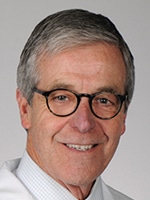
Dr. Nolte
Uncharted season forges new paths for all hands
“Uncharted territory for influenza” is how Frederick Nolte, PhD, D(ABMM), of the Medical University of South Carolina, describes the prospect of testing for influenza at the scale labs have been testing for SARS-CoV-2. And does a positive test for influenza mean the patient doesn’t have COVID-19? In a child with mild illness, how will it be known if it’s COVID or a rhinovirus? Having to make the latter diagnosis “will make for a long winter season,” says Christine Ginocchio, PhD, MT(ASCP), of BioMérieux/BioFire Diagnostics. Read more.

Dr. Crawford
Compass points chart the pandemic
Between a rock and a hard place. Trying to stay ahead, trying to build inventory. Chasing multiple new testing requests. Anticipating influenza. That’s where laboratory leaders said their labs were in early August when CAP TODAY publisher Bob McGonnagle convened members of the Compass Group on Zoom to share their pandemic experiences. They shared surprise, too, that the situation is what it is: “Not a clue in my mind that this would go past the springtime,” said Stan Schofield, president of NorDx and senior VP, MaineHealth. Read more.

Dr. Nolte
The laboratory tests of pandemic summer
In March, the COVID-19 pandemic came in like a lion—and has yet to leave, like a lamb or anything else. Instead, it roared through April and May in early hot spots like New York City and New Orleans. As lockdowns took hold, the cautious hope was that by summer the virus would be tamed (if not simply go away “like a miracle” or “as the heat comes in,” per several infamous predictions), giving health care providers a chance to exhale before a likely second wave in the fall. Read more.

Dr. Anderson
Steps to verifying SARS-CoV-2 antibody assays
The CAP treats emergency use authorization assays similar to FDA-cleared assays and thus requires full verification. In a Juneac 4 CAP webinar, Neil Anderson, MD, D(ABMM), assistant director of clinical microbiology, Washington University School of Medicine in St. Louis, walked through how to approach verification for SARS-CoV-2 assays. Co-presenter Elitza Theel, PhD, D(ABMM), director of the infectious diseases serology laboratory at Mayo Clinic, reported what’s known about protective immunity against SARS-CoV-2. For analytical interference, typical substances to investigate are hemoglobin, bilirubin, and triglycerides, and this should be performed at the limit of detection. Read more.
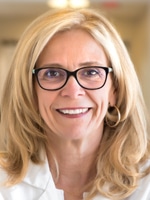
Dr. Dickson
Lab with Ebola experience: COVID more complicated
If there’s one thing scarier to experience than COVID-19, it’s Ebola. Or so you might think. “Ebola was easier,” says Beverly Dickson, MD, medical director of the clinical laboratory at Texas Health Presbyterian Hospital Dallas. Not that she herself has experienced shortness of breath or body aches. Rather, she’s contrasting her experiences at a hospital that has treated patients with Ebola and patients with COVID-19. How those events stack up from the laboratory’s point of view may yield helpful insights for others in this time of pandemic. Read more.
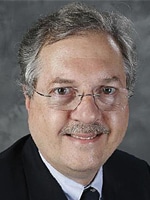
Dr. Abel
COVID testing capacity falls short as flu season nears
As the need for COVID-19 testing grows well beyond that for hospital patients, clinical laboratories in mid-summer were again overwhelmed by demand while at the same time bracing for flu season. That was the gist of a July 10 webinar that brought together Gyorgy Abel, MD, PhD, medical director of clinical chemistry, molecular diagnostics, immunology, and point-of-care testing at Lahey Hospital and Medical Center, Burlington, Mass.; Bob McGonnagle, CAP TODAY publisher; and moderator Steve Beuchaw, director of life science and medical device research, Wolfe Research. Read more.
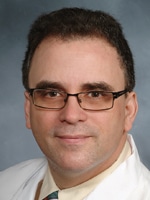
Dr. Borczuk
Reading COVID-19’s signature: lung tissue injury
Alain Charles Borczuk, MD, began his practice of pathology as a resident 28 years ago and has spent quite a bit of his career doing autopsies. But it is this year, during the pandemic, that he’s finding some of the best applications of his autopsy work as he seeks to understand the lung injury patterns in SARS CoV-2, or COVID-19 patients. “There has not been a period of time in which there’s been a greater realization of the absolute critical importance of doing autopsy than right now,” says Dr. Borczuk, professor of pathology at Weill Cornell Medical College and vice chair of anatomic pathology at Weill Cornell Medicine. Read more.

Dr. Fyodor
How one research lab morphed into a COVID-19 testing lab
In the early days of the COVID-19 pandemic, when the University of California, Berkeley’s Innovative Genomics Institute decided to rapidly shift gears from conducting research to testing the community for the SARS-CoV-2 virus, some insiders may have thought the university was biting off more than it could chew under a tight timeframe. Yet a look at the lab 23 days later surely had any doubters eating their words. Read more.
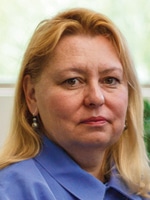
Dr. Slev
At the pandemic’s serologic frontier
The arrival of a pandemic has shown—among many, many other things—that anyone who talks about it typically starts by saying, “This is a pandemic.” The next sentence tends to be, “It’s a completely different situation,” whether the focus is grocery shopping, exercising (or not), voting, or practicing medicine. Pointing to the pandemic is a polite way of saying, “All bets are off.” For many, it’s been a springboard to innovation and breakthroughs, even in the midst of considerable anguish. Read more.
Autopsies show many faces of COVID-19
“Sudden” and “global” are descriptors that seldom appear in tandem, especially in relation to disease epidemiology. But they both fit the COVID-19 pandemic, which has left the health care world reeling. “COVID-19 has infected the entire planet pretty much all at once,” says Alex K. Williamson, MD, chief of autopsy pathology and director of the regional autopsy service for Northwell Health, the largest health system in New York State. “Never before have I seen a single disease stop the world.” For autopsy services, it has created exceptional challenges, and, in watching the crisis balloon, Dr. Williamson realized that autopsy pathologists would have to cope with a serious information gap. “We were all facing the unknown with how to handle morgue operations and autopsies involving COVID. And we were trying to figure things out in isolation. There’s no playbook for what we’re going through.” Read more.

Dr. Giuseppe Lippi (right), with Dr. Mario Plebani
In Italy, lessons learned for lab testing
The key lesson for policymakers and hospital administrators stemming from the pandemic is that continuing to cut human and economic resources will create large organizational issues when the entire system of care, including laboratory diagnostics, is challenged by “an enormously amplified volume of tests to manage emergent situations,” write Giuseppe Lippi, MD, of the University of Verona, and Mario Plebani, MD, of University Hospital of Padova, Italy, in an opinion paper published online March 19. They write that high-throughput instrumentation, too few employees, and reduced levels of health care funding, especially for public facilities, “all contributed to considerably reducing the flexibility to develop emergent responses” to viral outbreaks, the most recent being COVID-19. Read more.
Letter to the editor: Billing and the road ahead
From Mick Raich, chief executive officer, Vachette Pathology: I enjoyed the recent roundtable on billing and reimbursement (April 2020), along with the product guide on billing software. As we all know, since that time COVID-19 has taken center stage. Here are some thoughts and predictions to bring your readers up to date. Never before has a nation turned off a large percentage of its health care system overnight. Read more.
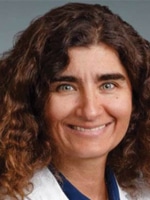
Dr. Hochman
Amid COVID-19 crisis, pathologists fill a critical gap
At NYU Langone Health, pathologists and others typically not seen out front in the fight against COVID-19 became the bridge between families and the floors. When Katherine A. Hochman, MD, contracted a mild case of COVID-19, she finally had a chance to take a step back and think. Before going into quarantine to recover, Dr. Hochman had been on the floors day in and day out attending to COVID-19 patients. “What bothered me when I was on the wards was that there was this major disconnect of information,” Dr. Hochman, who is also the assistant chief of the medicine service, told CAP TODAY on April 23. Read more.
At UW, anatomic pathology rotation moves online
When COVID-19 set in, much of residency education in the U.S. moved online. At the University of Washington School of Medicine, anatomic pathology faculty took online learning a step further by creating a virtual two-week anatomic pathology rotation for medical students. The faculty is aiming for a four-week virtual rotation inclusive of more laboratory medicine, to be used even after the pandemic has passed. “All medical student rotations were canceled. But some students had expressed an interest in pathology, and we felt bad they couldn’t get their rotation in,” says assistant professor of pathology Lisa Koch, MD, PhD. She suggested to the medical school leaders that a virtual rotation might be possible. “They said, ‘Great. Can you take 40 students?’” Read more.
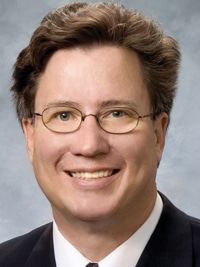
Dr. Love
Suiting up for COVID-19 autopsies, sharing findings
To combat the spread of COVID-19, Louisiana’s governor in late March issued an order directing state residents to limit their excursions outside. But LSU medical school pathologists at University Medical Center, New Orleans, found a breath of fresh air just the same. “When this outbreak was approaching, I had our facilities manager review the ventilation in our morgue,” says Gordon L. Love, MD, professor of clinical pathology and chair of pathology at Louisiana State University School of Medicine as well as medical director of University Medical Center clinical laboratories. Read more.
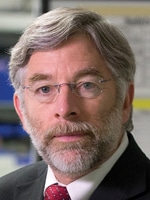
Dr. Waugh
A lab world embroiled in pandemic
Along with SARS-CoV-2, clinical laboratory testing has been hiding in plain sight far longer than many people realize. But it took the novel coronavirus (which, frankly, hardly feels novel anymore) to make that clear to the rest of the world. As the COVID-19 pandemic spread across the globe, laboratory testing crashed the news cycle. National leaders sought to reassure citizens by promising millions of test kits. Economies shattered—and have since sought to return to life—based on testing availability. Read more.

Dr. Miller
A conversation: Specimen collection and testing for SARS-CoV-2
Specimen collection, supplies, and serological tests were on the table when CAP TODAY publisher Bob McGonnagle spoke recently with J. Michael Miller, PhD, D(ABMM), director of Microbiology Technical Services, Dunwoody, Ga. Dr. Miller was with the CDC for 35 years in various roles, among them as chief of the Epidemiology and Laboratory Branch, chief of the Laboratory Response Branch, and chief laboratory science officer for the National Center for Emerging and Zoonotic Diseases. Here is what McGonnagle and Dr. Miller talked about, several weeks into the pandemic. Read more.
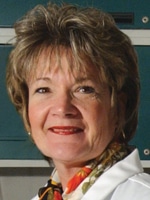
Dr. Ginocchio
From single to syndromic tests for SARS-CoV-2
Christine C. Ginocchio, PhD, MT(ASCP), in an April 8 CAP TODAY webinar, reported findings on the analytical efficiencies and sensitivities of four of the original and most common of the SARS-CoV-2 assays. Dr. Ginocchio, vice president of global medical affairs for BioMérieux/BioFire Diagnostics, also spoke about virological assessment, antibody tests, coinfections, and syndromic testing, in the webinar made possible by a special educational grant from BioFire. Watch the full webinar here. Read more.
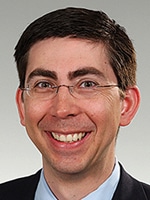
Dr. Sossaman
Gregory Sossaman, MD, on ramping up SARS-CoV-2 testing
High rates of positivity but glimmers of hope. That’s what Gregory Sossaman, MD, was seeing in southeast Louisiana on April 14 when writer Meredith Salisbury spoke to him for CAP TODAY. Dr. Sossaman is system chairman of the Department of Pathology and Laboratory Medicine, Ochsner Health, New Orleans. Ochsner is an integrated delivery network located primarily in southeast Louisiana, though it has formed partnerships in recent years with other systems and hospitals in the state. Read more.